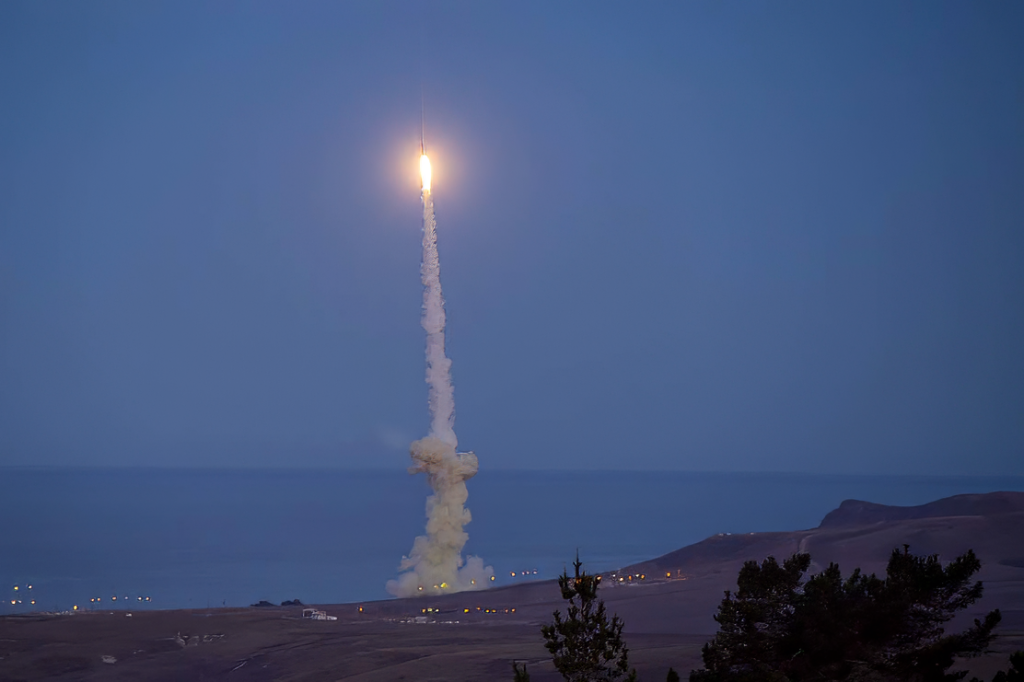
The Indo-Pacific region has become one of the most strategically volatile areas in the world, marked by escalating tensions between major powers and an evolving array of security threats. Among the most pressing challenges are the advanced missile capabilities of regional actors such as China and North Korea. Both nations have invested heavily in developing ballistic missiles, cruise missiles, and hypersonic weapons, presenting a significant challenge to the defense postures of the United States and its allies.
In response, advanced missile defense systems have emerged as a critical component of regional security strategies. These systems aim to deter aggression, protect key infrastructure and populations, and maintain stability in an increasingly contested environment. However, the deployment and enhancement of missile defenses in the Indo-Pacific also raise complex issues, including the risk of arms races, technological vulnerabilities, and the balancing of deterrence with broader geopolitical stability.
This article provides an in-depth analysis of the challenges and opportunities associated with strengthening missile defense systems in the Indo-Pacific. It examines the capabilities and limitations of existing systems, the geopolitical dynamics shaping their deployment, and the future of missile defense in a region critical to global security.
The Growing Missile Threat in the Indo-Pacific
The Indo-Pacific has seen a dramatic increase in missile capabilities, driven by regional powers seeking to enhance their military leverage. China, for instance, has developed a diverse missile arsenal as part of its Anti-Access/Area Denial (A2/AD) strategy. The DF-21D and DF-26 anti-ship ballistic missiles (ASBMs) are designed to target U.S. aircraft carriers and other naval assets, while its growing inventory of conventional and nuclear-capable ballistic missiles threatens both regional allies and U.S. territories.
North Korea presents a different but equally concerning challenge. Pyongyang has conducted multiple missile tests, showcasing advancements in range, accuracy, and survivability. Its intercontinental ballistic missiles (ICBMs) are capable of reaching the U.S. mainland, while its short- and medium-range missiles pose an immediate threat to South Korea, Japan, and other neighboring nations. North Korea’s emphasis on mobility and solid-fuel technology further complicates interception efforts.
These missile developments are not merely tactical but strategic, aimed at coercing adversaries, undermining alliances, and altering the balance of power in the Indo-Pacific. As missile threats continue to grow in sophistication, the demand for effective missile defense systems becomes increasingly urgent.
Existing Missile Defense Systems in the Indo-Pacific
The Indo-Pacific region hosts some of the world’s most advanced missile defense systems, deployed by the United States and its allies to counter regional threats. Key systems include:
1. Terminal High Altitude Area Defense (THAAD):
THAAD systems are deployed in South Korea to defend against North Korean ballistic missiles. Capable of intercepting missiles in their terminal phase, THAAD provides a critical layer of defense, though it has faced political opposition from both China and domestic factions in South Korea.
2. Aegis Ballistic Missile Defense (BMD):
Deployed aboard U.S. Navy and Japanese Maritime Self-Defense Force ships, the Aegis BMD system is central to the region’s missile defense architecture. Equipped with SM-3 interceptors, Aegis ships can engage ballistic missiles in midcourse, providing a mobile and flexible defense capability.
3. Patriot Advanced Capability (PAC-3):
Patriot systems are widely deployed in Japan and South Korea, offering point defense against short- and medium-range missiles. The system’s ability to intercept low-flying missiles complements higher-altitude systems like THAAD.
4. Ground-Based Midcourse Defense (GMD):
Though primarily focused on defending the U.S. mainland, GMD contributes to Indo-Pacific security by providing an additional layer of defense against ICBMs launched from North Korea.
While these systems provide robust protection, they are not without limitations. Their high cost, limited coverage areas, and potential vulnerability to saturation attacks highlight the need for continued investment and innovation in missile defense technologies.
Challenges in Strengthening Missile Defense in the Indo-Pacific
Despite its importance, enhancing missile defense in the Indo-Pacific faces several challenges:
1. Technological Complexities:
Modern missile threats, such as hypersonic glide vehicles and stealthy cruise missiles, present significant challenges to existing defense systems. Hypersonic weapons, in particular, combine extreme speed with unpredictable flight paths, making them difficult to detect and intercept. Developing technologies capable of countering these threats will require substantial investment in research and innovation.
2. Cost and Sustainability:
Advanced missile defense systems are expensive to develop, deploy, and maintain. The high cost of interceptors, coupled with the need for continuous upgrades to counter evolving threats, places a heavy financial burden on governments. Ensuring the sustainability of these systems over the long term remains a critical concern.
3. Regional Opposition and Geopolitical Tensions:
The deployment of missile defense systems often provokes strong reactions from neighboring nations. China, for example, has criticized the deployment of THAAD in South Korea, arguing that its radar systems threaten China’s strategic deterrent. These tensions complicate regional security dynamics and may hinder broader cooperation.
4. Risk of Arms Races:
The deployment of missile defenses can incentivize adversaries to develop more advanced offensive capabilities, such as decoys, multiple independently targetable reentry vehicles (MIRVs), and hypersonic weapons. This dynamic risks fueling an arms race that could destabilize the region.
5. Interoperability Among Allies:
Ensuring seamless integration and interoperability among the missile defense systems of different nations is a significant challenge. Variations in technology, command structures, and strategic priorities can impede the effectiveness of allied missile defense networks.
Opportunities and Innovations in Missile Defense
While the challenges are significant, the Indo-Pacific also presents opportunities for advancing missile defense:
1. Integration of Emerging Technologies:
The incorporation of artificial intelligence (AI) and machine learning into missile defense systems can enhance threat detection, tracking, and response times. AI-driven algorithms can analyze vast amounts of data in real-time, improving the accuracy of interceptions and reducing human error.
2. Directed Energy Weapons (DEWs):
High-powered lasers and microwave systems offer promising alternatives to traditional interceptors. DEWs provide cost-effective, scalable solutions capable of neutralizing multiple threats, such as drones and cruise missiles, with minimal logistical demands.
3. Space-Based Sensors and Interceptors:
Deploying sensors and interceptors in space can enhance early warning capabilities and extend the range of missile defense systems. Space-based assets offer a global perspective, allowing for the tracking of missile launches from virtually anywhere in the region.
4. Enhanced Multilateral Cooperation:
The Indo-Pacific’s complex security environment necessitates greater collaboration among allies. Joint exercises, intelligence sharing, and coordinated deployments can strengthen regional missile defense networks. Initiatives like the Quadrilateral Security Dialogue (Quad) provide a platform for deepening cooperation among the U.S., Japan, India, and Australia.
5. Development of Hypersonic Defense Systems:
Countering hypersonic threats will require a new generation of missile defense technologies. Research into advanced interceptors, glide phase detection, and rapid-response systems is already underway, with significant progress expected in the coming years.
The Role of Alliances in Regional Missile Defense
Alliances play a critical role in shaping missile defense strategies in the Indo-Pacific. NATO’s partnership with Japan and South Korea, for example, facilitates the sharing of best practices and technologies, while bilateral agreements between the U.S. and its allies provide the foundation for coordinated defense efforts.
The Quad, comprising the U.S., Japan, India, and Australia, has also emerged as a key forum for addressing missile threats in the region. While not explicitly a missile defense alliance, the Quad’s focus on regional security and interoperability creates opportunities for collaboration in this domain.
In addition, ASEAN nations are increasingly engaging in missile defense discussions, recognizing the importance of regional cooperation in addressing shared threats. Enhanced dialogue and joint initiatives among these countries can contribute to a more cohesive and resilient defense architecture.
Balancing Deterrence and Stability
The deployment of advanced missile defense systems in the Indo-Pacific is a delicate balancing act. On one hand, these systems serve as a deterrent, reducing the likelihood of aggression by adversaries such as China and North Korea. On the other hand, they can exacerbate regional tensions and provoke countermeasures that undermine stability.
To strike this balance, nations must pursue a comprehensive approach that integrates missile defense with broader diplomatic and economic strategies. Confidence-building measures, arms control agreements, and crisis communication mechanisms can help mitigate the risks associated with missile defense deployments.
Additionally, promoting transparency and inclusivity in missile defense initiatives can foster trust among regional actors, reducing the potential for misunderstandings and miscalculations. By combining robust defenses with proactive diplomacy, the Indo-Pacific can navigate the complexities of missile threats while maintaining peace and stability.
The Indo-Pacific’s evolving security landscape underscores the critical importance of advanced missile defense systems. As regional powers like China and North Korea continue to enhance their missile capabilities, the need for effective, adaptable, and sustainable defenses becomes increasingly urgent.
While the challenges of strengthening missile defense in the Indo-Pacific are formidable, advancements in technology, enhanced multilateral cooperation, and innovative strategies offer promising pathways forward. By addressing these challenges and seizing these opportunities, nations can build a resilient defense architecture that deters aggression, protects vital interests, and contributes to regional stability.
As the Indo-Pacific emerges as the epicenter of global competition, missile defense will remain a cornerstone of security strategy, shaping the region’s future for decades to come.
